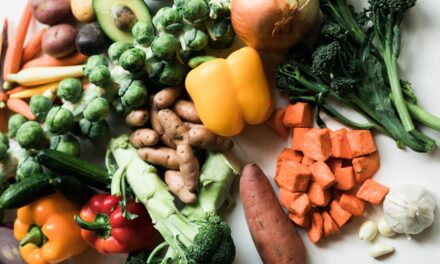How to Combine Keto and Fasting

The ketogenic diet and intermittent fasting are two very popular ways of eating that many people adopt for weight loss, overall health, and other potential benefits.
To safely and successfully combine a keto diet with intermittent fasting, it’s important to understand how they work individually and some ways you might consider approaching them together for the best outcomes.
What is Keto?
The ketogenic, or keto, diet is a very low carbohydrate and high-fat way of eating. It aims to force your body into a state of ketosis, in which you begin to break down fat stores instead of the dietary carbs that you normally would for fuel. This process produces compounds called ketones, which are used as your body and brain’s primary source of energy instead of glucose. [1]
In a keto diet, carbohydrate intake is typically limited to between 20-50 grams per day in order to achieve, and maintain, the state of ketosis. [2] As such, the keto diet is based mostly on low-carb foods such as fish, meat, eggs, poultry, non-starchy vegetables, berries, plant oils, and nuts. Additionally, a keto diet limits grains and bread, starchy vegetables like potatoes and carrots, and dairy products that tend to be higher in carbohydrates.
While many people adopt a keto diet with the initial goal of weight loss in mind, this approach to eating also offers other potential benefits. For instance, a keto diet may help improve blood sugar management, insulin resistance, and even offer some protective benefits for the heart and brain. [3-5]
What is Fasting?
Intermittent fasting can be approached in a number of ways and focuses more on the structure of your eating pattern than the foods you actually eat. That being said, most fasting advocates recommend focusing on healthy foods for the best experience and results. The main characteristic of fasting is that it’s an approach to eating that cycles between periods of eating and not eating. [6]
For instance, some people may try the Eat-Stop-Eat approach, which involves a full 24 hour fasting period once or twice every week. Others find that the 16/8 method or Leangains protocol works well for them, which usually involves skipping breakfast and restricting your eating period to 8 hours during your awake time each day.
Some prefer a 5:2 diet, which means that you can eat normally, with fasting periods, on five days out of the week, but then restrict your calorie intake to 500-600 per day on the other two days.
Intermittent fasting may offer potential benefits like better blood sugar control, reduced inflammation, and even better cognitive function. [7-9]
Potential Benefits of Combining Keto and Fasting
Depending on the individual and their goals, the combination of a keto diet with fasting may offer a number of benefits.
Some studies indicate that practicing both could trigger more fat loss, which could be ideal for those doing it for weight goals. In fact, fasting may promote thermogenesis, which increases fat burn and could work nicely with a keto diet. [10]
Other studies suggest that fasting can lead to more body fat and weight loss compared to normal or low-calorie eating patterns. Fasting may promote fat loss while preserving muscle mass, which may be especially attractive for people wanting to improve body composition or athletic performance. [8, 11-13]
Furthermore, combining the two eating patterns may help you achieve a state of ketosis faster than a keto diet alone. Hence, anyone struggling to achieve ketosis may find it beneficial to add fasting to their approach.
This may also help you avoid “keto flu”, a common complaint for many people while the body switches to fat-burning and first achieving ketosis. [14]
When you practice fasting, your body maintains energy balance by using fat for fuel instead of glucose. This aligns with the purpose of a keto diet and could amplify the effects. Additionally, insulin and glycogen stores decrease in periods of fasting, which promote fat-burning as the primary source of fuel. [15,16]
How to Combine Keto and Fasting
Before you begin, make sure you have a plan. A little prep work can go a long way and minimize the risk of getting off track from your goals.
Determine the fasting schedule that is most likely to be sustainable for you. This may be 12 hours including your overnight sleep, or you may feel good increasing it to a 14, 16, or even 24 hour period. You may want to start with one shorter fasting window and then adjust as needed.
It can be helpful to plan your menu ahead as well. If you typically eat on the fly, becoming more disciplined about your food choices can help prevent overeating, undereating, and the potential side effects of changing your eating pattern too dramatically.
If you’re not much of a planner, even writing out a basic meal plan at the beginning of the week can help you stay on target with your goals and take out the guesswork of your daily menu. Because a keto diet requires a high fat, low carbohydrate meal plan, it can at least be helpful to stock your kitchen to align with those requirements.
When starting a keto and fasting diet approach, it may be prudent to start slowly. It can take some time for your body to adjust to one of these changes, let alone both at once.
While a combination of keto and fasting may work for some people, it’s not guaranteed to be appropriate or effective for everyone. If you decide to try both dietary approaches combined, the most important part is that you only continue what feels good to you and adjust what you’re doing if it doesn’t.
Who Should Not Combine the Two
For most healthy people, a combination of a keto diet and an intermittent fasting eating pattern likely comes with a low safety risk when well-planned.
That being said, it’s typically recommended that eating patterns with specific rules and schedules should be avoided by people with a history of eating disorders.
Additionally, speak to your physician if you have a medical condition to determine whether a combined keto and fasting diet is appropriate. Women who are pregnant or breastfeeding should generally avoid such drastic dietary changes.
Read More:
Author:

Lauren Panoff
Lauren specializes in plant-based living and vegan and vegetarian diets for all ages. She also enjoys writing about parenting and a wide variety of health, environmental, and nutrition topics. Find her at www.laurenpanoff.com.





